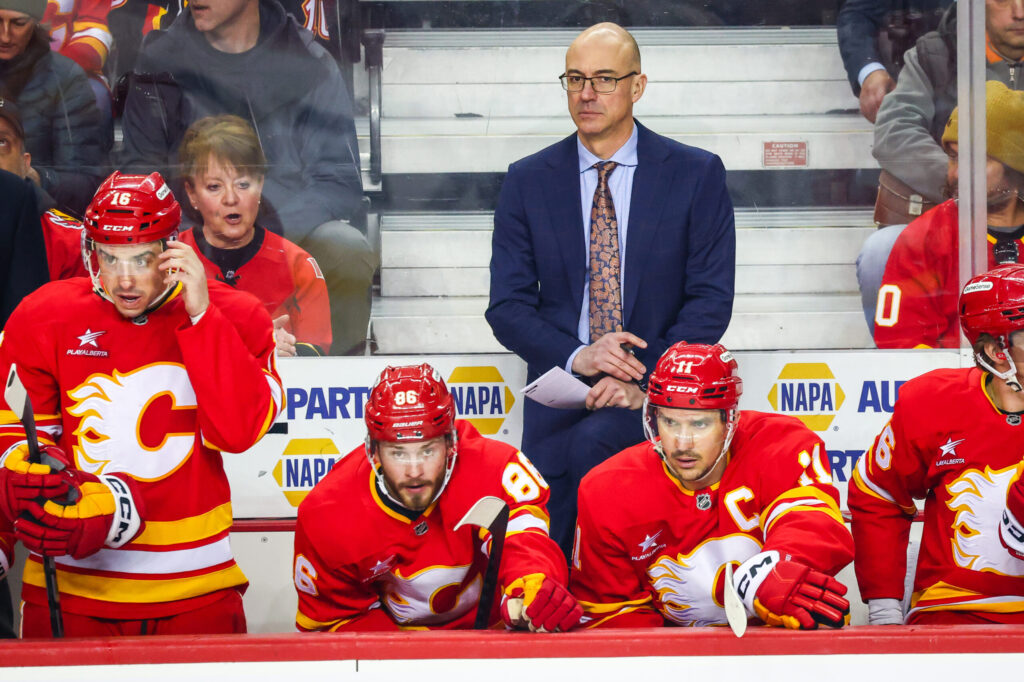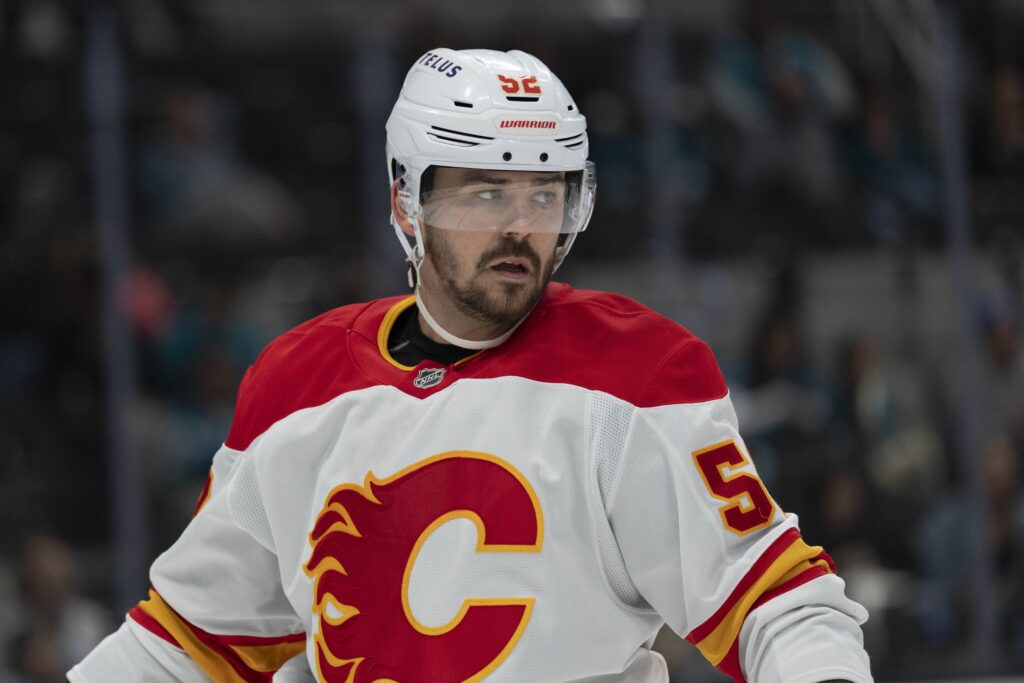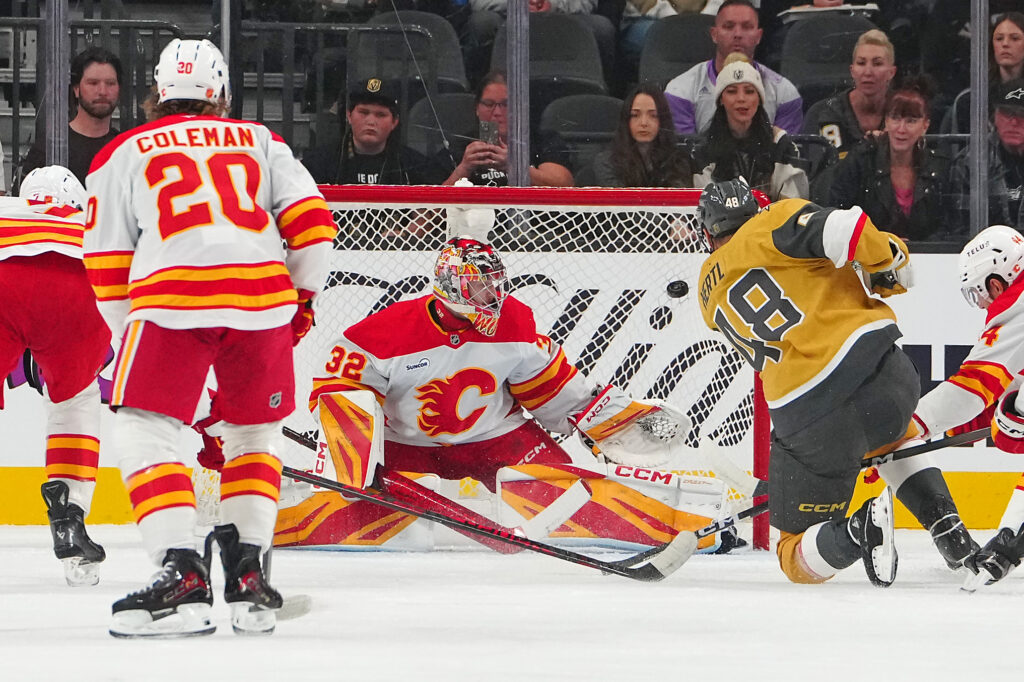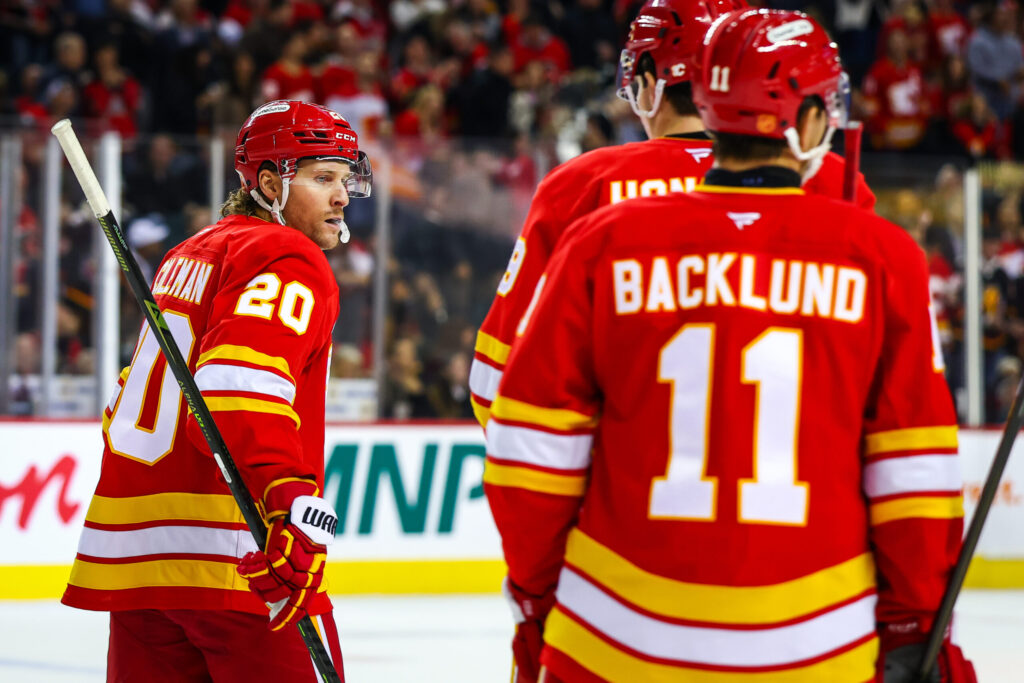The Calgary Flames are only nine games into the 2025-26 NHL season, and for all intents and purposes, it’s already over.
That isn’t hyperbole; it’s simple math. A 1-7-1 record, cemented by a eight-game losing streak, isn’t just a “clunky start”—a benchmark this team already matched from the 1997-98 and 2015-16 campaigns. This is a systemic failure, a complete collapse of every facet of the game that has placed the team in the Pacific Division basement.
Head Coach Ryan Huska has pointed to “poor individual mistakes,” but the tape and the data show something far more profound. This team is fundamentally broken on offense, disconnected on defense, and receiving subpar goaltending. The result is a season already on life support, with the only meaningful question remaining being how many pieces General Manager Craig Conroy will sell off by the trade deadline.

Offensive Inertia: A Failure to Generate Danger
To say the Flames are struggling to score is a gross understatement. They are statistically the worst offensive team in the National Hockey League, averaging a meager 1.63 goals per game.
The problem isn’t merely a low shooting percentage; it’s a complete inability to generate anything resembling high-danger offense. Watch a Flames game, and you’ll see a team perfectly content to play on the perimeter, taking low-percentage shots that serve as easy glove saves for opposing netminders.
Their recent loss to Montreal was a perfect microcosm. The Flames registered 37 shots, a respectable number on paper. But peel back the layers, and you find that 17 of those—nearly half—came from defensemen, many of them floated gently from the point without traffic or a deflection. The forwards, meanwhile, settle for long-range wristers with no pre-shot movement. There is no creativity, no east-west passing, and no willingness to pay the price at the net front.
Their lone goal in that contest, scored by Adam Klapka, was the exception that proves the rule. It came not from sustained pressure or a structured play, but from a fortunate takeaway that resulted in a partial breakaway. The Flames cannot, and are not, manufacturing offense. They are waiting for it, and it is not coming.
The Powerless Play
This offensive ineptitude is crystallized in their special teams. The Flames’ power play is operating at an abysmal 13.2% (5-for-38), ranking fourth-worst in the league.
This is where the team’s lack of elite finishers is supposed to be mitigated by structure and execution. Instead, it’s amplifying their weaknesses. A significant portion of the blame is falling on MacKenzie Weegar, who has been deployed as the quarterback on the top unit. The experiment has been a categorical failure. Weegar is often failing to distribute the puck effectively to players in better shooting lanes, and his own attempts from the point have been ineffective, rarely challenging goaltenders or creating dangerous rebounds. When your man-advantage unit is this listless, your 5-on-5 woes become insurmountable.

System Failure: Disconnected in Their Own Zone
A team this offensively challenged has exactly one path to victory: tight-checking, low-event, 2-1 hockey. They must be structurally perfect in their own end.
The Flames are the opposite.
They are bleeding chances, sitting sixth-last in the league with 3.78 goals-against average. The team’s in-zone defense appears entirely “disconnected.” Tape shows players out of position, missed assignments, and chronic miscommunication, leading to wide-open ice for opponents in high-leverage areas.
Huska’s comment about “individual mistakes” is accurate, but it’s happening with such frequency that it points to a systemic breakdown. Younger, faster teams are getting behind the Flames’ defense with ease, forcing the goaltenders to scramble. For a roster built to win by grinding, being this poor defensively creates a “mountain,” as one source put it, that is simply too steep to climb for an offense scoring one-and-a-half goals per night.
No Salvation from the ‘Sophomore Slump’
The final pillar to collapse has been in the crease. Last season, Dustin Wolf was a revelation, a Calder-worthy rookie who papered over many of the team’s defensive flaws. That netminder has disappeared.
Wolf is currently mired in a deep sophomore slump. His surface-level numbers are grim: a .874 save percentage and a 3.68 goals-against average, a far cry from his .910 and 2.64 marks last season.

The “big save” is gone. The defensive gaffes that Wolf erased last year are now ending up in the back of the net, and his confidence appears shaken.
The Grim Calculus and the Inevitable Pivot
With the season already in tatters, the conversation in Calgary is shifting from playoff hopes to draft lottery odds. The math is simply too daunting.
The average benchmark for a playoff spot in the Western Conference is 97 points. To reach that, the Flames would need to collect 94 points over their remaining 73 games. That requires a 1.27 points-per-game pace for the rest of the season—a pace equivalent to the performance of last year’s Dallas Stars or Los Angeles Kings.
This roster is not capable of that. Management knows it, the players know it, and the fans know it. This start has justified what many have been calling for: a long-overdue, full-scale rebuild. The 2026 Draft, not the 2026 Playoffs, is now the organizational priority. Management is guaranteed to be sellers at the deadline.
This brings the focus to the team’s veterans. Names like Rasmus Andersson, Blake Coleman, Joel Hanley, Jake Bean, and Ryan Lomberg will all be in play.
The most fascinating case, however, is Nazem Kadri. New details have emerged suggesting Kadri’s contract protection changed this year, moving from a full no-move clause (NMC) to a partial 13-team no-trade clause. This is a significant development. While Kadri still holds considerable control, it provides GM Craig Conroy with a window of flexibility he did not previously have. Finding a contender willing to take on that contract will be difficult, but the door is now ajar.
The first eight games of this season have served as a brutal, clarifying verdict on the state of the Calgary Flames. The competitive window for this core isn’t just closed; it’s been painted shut. The rest of this 74-game slog will not be about a miraculous turnaround, but about the painful, necessary process of dismantling the present to build a future.
Created with the aid of Gemini AI
